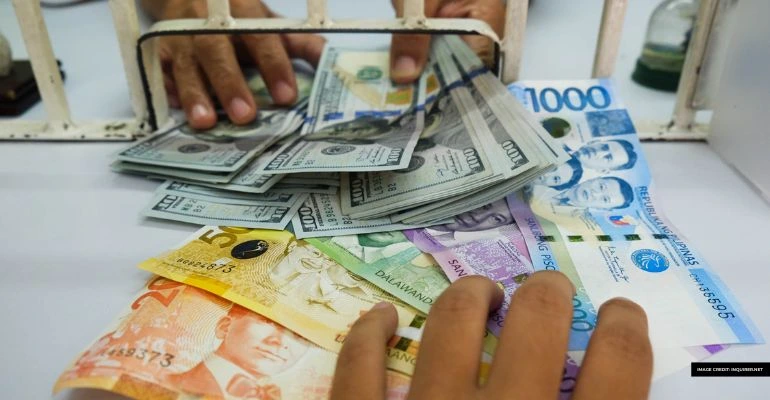The Bangko Sentral ng Pilipinas (BSP) clarified that the recent depreciation of the Philippine peso should not be misconstrued as a sign of weakness.
BSP Governor Eli Remolona Jr. emphasized, “It’s not a case of a weak peso. It’s a case of a strong dollar.”
This statement comes amidst the peso’s dip to record-low levels of 59 against the US dollar earlier this week.
The decline reflects the strengthening US currency driven by global geopolitical tensions and financial market reactions.
“The recent depreciation of the peso against the dollar is about a strong US dollar story due to the rising geopolitical tensions,” the BSP stated.
The peso’s movement is consistent with the trends observed in other Asian currencies. Many of which have struggled against a rallying greenback.
Despite this, the peso showed resilience, rebounding 0.3% to 58.84, outperforming its emerging Asian counterparts.
Also Read: Philippine peso regains value against US dollar
The BSP also reassured the public that it is prepared to intervene and stabilize the Philippine peso if necessary.
Dutch financial institution ING Bank echoed this sentiment, noting that a further drop in the peso beyond 59:$1 is unlikely due to the BSP’s strong defensive measures.
Thus, the peso’s performance has been closely monitored, with traders assessing the central bank’s tolerance for currency fluctuations.
Since 2022, the 59:$1 level has acted as a significant support point for the peso. The BSP reiterated its commitment to maintaining economic stability despite external pressures.
“The peso traded in line with the regional currencies we benchmark against,” it said, underscoring that the local currency’s depreciation is not isolated but part of a broader regional trend.
To learn more about the current issue of peso depreciation, explore the details below!
How does the strengthening US dollar impact the Philippine peso and other regional currencies?
Investors often flock to the dollar during geopolitical tensions, viewing it as a “safe haven” currency. This increased demand strengthens the dollar, making the US dollar to Philippine peso exchange rate higher. This way, it can result in depreciation of the peso and other currencies in the region.
However, this depreciation does not necessarily indicate weakness in the peso itself but reflects broader economic trends.
Also Read: Sandiganbayan Drops ₱276-Million Forfeiture Case
What measures can the Bangko Sentral ng Pilipinas take to stabilize the peso if necessary?
BSP can use several tools to stabilize the Philippine peso. These include intervening in foreign exchange markets to manage excessive volatility, adjusting interest rates, or implementing monetary policies to attract foreign investment.
By reinforcing the peso’s value against the US dollar to Philippine peso exchange rate, the BSP ensures economic stability and builds confidence among traders and investors.
Why is the Philippine peso’s performance tied to regional currency trends?
The Philippine peso often moves in line with other regional currencies because of shared economic exposures, such as reliance on exports, sensitivity to US monetary policy, and reactions to geopolitical tensions. When the dollar strengthens globally, currencies like the peso, Indian rupee, and others in Asia may face depreciation as a collective response.
Despite this, the peso has shown resilience. This indicates that the peso’s fluctuations are part of a broader trend rather than an isolated issue.
To date, the Philippine peso remains an essential indicator of the country’s economic health. With the BSP’s proactive stance, it aims to reassure markets and investors amid a volatile global financial landscape.
Keep Reading: Government debt soars to P14.51 trillion in November 2023

Leave a Reply